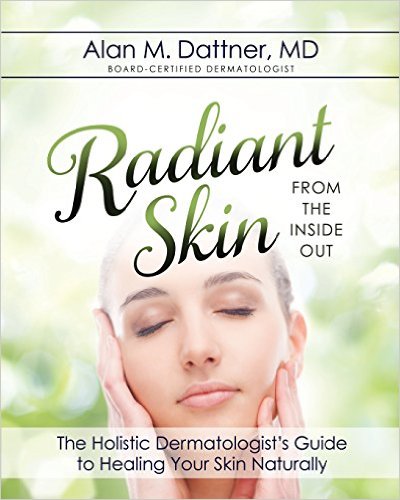As I have developed the methodology of holistic dermatology, I often treat people who have seen a number of dermatologists, including some considered outstanding, as well as allergists, acupuncturists, naturopaths, chiropractors or others familiar with alternative medicine. I attempt to find the causal factors and reverse them, rather than to just alleviate the symptoms. I focus on reversing causal factors rather than inhibiting the end mechanism in the inflammatory process that manifests as a skin condition.
If you missed part I, click here.
In order to do so, I make two levels of diagnosis. The first is a dermatologic diagnosis, like we all have been trained to do, including a differential diagnosis. Often, two or more very different diagnoses may be entertained, neither of which meet the classical criteria. Each may have very different associated mechanistic, and causal factors, and different associated symptoms. Making this differential diagnosis is something that non-dermatologist alternative practitioners usually cannot do.
Just as we have sub-specialists in Moh’s surgery, and pediatric dermatology, having a national network of dermatologist specialists who are fluent in holistic methodology would expand our field’s versatility and efficacy for treating difficult cases. It would also, by enhancing the understanding of underlying factors contributing to disease, enhance the effectiveness of current treatments. I am in the process of creating a course for dermatologists interested in learning these particular skills for those interested. My book, Radiant Skin from the Inside Out, is an introduction to the concepts and methods I use.
The second level diagnosis I make is an etiologic diagnosis. This is similar to evaluation of contact dermatitis: looking at the lesion pattern and distribution for clues, getting a history of possible exposures, and then doing testing when necessary, to discover the causative antigen. In my work, I expand the search for causal factors for any inflammatory skin disorder, and do so according to my ever-growing understanding of the sources of provocative antigens and mechanisms to allow exposure to them. I see the digestive system as the largest source of foreign antigens, and the gut flora as a modifier of everything from translocation of these antigens to hormonal dis-regulation and source of cross reactive stimulation of attack on specific targets in the skin.
I probe patient history for digestive issues such as bloating, gas, abdominal pain, constipation and diarrhea, and try to get some idea about the cause. These symptoms can be signs of intestinal overgrowth of organisms such as yeast or pro-inflammatory bacteria, causing inflammation and disruption of the normal intestinal barrier. Gluten can also contribute to this disruption, leading to food antigens leaking into the blood supply or Peyer’s patches. These antigens can then either localize to the tissues to become immune targets, or sensitize the elements in the immune system to molecular mimics in the skin, leading to the immune attack and inflammation we see as skin disease. So foods can be the targets, the mimics, the “door openers”, or the modifiers of gut flora. It is no wonder that with this complexity, it is hard to have simple diet rules that would benefit all people with a particular skin condition.
Each dermatologist ought to find their own favorite combination of diagnostic techniques from systems beyond conventional methods. Soft methods include evaluating a patient according to the principles of other systems of healing such as Chinese medicine and acupuncture, Ayurvedic medicine, or a system I use a system developed by chiropractors call Applied Kinesiology, to get further information on organ function.
Hard data used includes lab tests, both conventional and for lack of a better word, unconventional: those not covered according to standard (insurance company) thinking. These can include tests of digestive function and stool analysis for microbiome. They may include various tests beyond IgE immune reactivity to different antigens. And they may include genetic testing for SNP’s that could lead to enzymatic ineffectiveness in breaking down various allergens. These are only a few of the growing number of tests that can help ferret out the causal pattern. In holistic dermatology, I tend to reserve lab testing as a last line of inquiry, choosing them carefully as indicated by other findings, need for more information, and need for patient support for my diagnosis and plan. I use my own history, physical, and diagnostic methods first, to put together a hypothesis of the causal pattern, and treat accordingly with diet, supplements, and occasionally conventional and other methods.
If you missed part I, click here. Check out part III next.
Testimonial Videos:
https://www.youtube.com/watch?v=3-ojaYjcK2Y
https://www.youtube.com/watch?v=7SEm2B5P2EA
Resources:
Dr. Alan Dattner’s Website for Holistic Dermatology: https://holisticdermatology.com/
Book:
Radiant Skin from the Inside Out: The Holistic Dermatologist’s Guide to Natural Skincare by Dr. Alan Dattner

Did you enjoy this article? Did you miss part I in the series? Check it out here.

